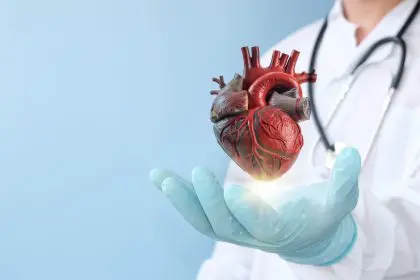Regular alcohol consumption creates a cascade of health problems that often develop silently over years before symptoms become apparent. While many people focus on the immediate effects of drinking, the long-term consequences can be devastating and life-threatening. Understanding these diseases can help you make informed decisions about alcohol consumption and recognize warning signs before permanent damage occurs.
The human body isn’t designed to process large amounts of alcohol regularly, and when forced to do so, multiple organ systems begin to break down. These diseases don’t just affect heavy drinkers; even moderate consumption over extended periods can trigger serious health conditions that may not be reversible.
How alcohol damages your body
Alcohol acts as a toxin that your body must work constantly to eliminate. When you drink regularly, your organs become overwhelmed trying to process and remove alcohol from your system. This constant stress leads to inflammation, cell damage, and eventual organ failure in multiple body systems.
The liver bears the primary burden of alcohol processing, but alcohol also affects your heart, brain, digestive system, and immune function. The toxic byproducts created during alcohol metabolism cause additional damage throughout your body, creating a compound effect that accelerates disease development.
1. Liver disease: The silent destroyer
Liver disease represents the most well-known consequence of alcohol consumption, but many people don’t realize how quickly and severely alcohol can damage this vital organ. The liver processes nearly all the alcohol you consume, and this constant workload gradually destroys liver cells and impairs function.
The progression typically begins with fatty liver disease, where fat accumulates in liver cells, making them less efficient. This stage often produces no symptoms, allowing the damage to continue unnoticed. As drinking continues, the condition progresses to alcoholic hepatitis, characterized by inflammation and swelling that can cause severe abdominal pain and jaundice.
The final stage, cirrhosis, involves permanent scarring that prevents the liver from functioning properly. At this point, the liver can no longer filter toxins from your blood, leading to a buildup of dangerous substances throughout your body. Without a liver transplant, cirrhosis is often fatal.
Many people develop liver disease without realizing it because symptoms don’t appear until significant damage has occurred. By the time you notice yellowing skin, abdominal swelling, or persistent fatigue, the disease may already be advanced and irreversible.
2. Heart disease: The cardiovascular time bomb
Alcohol consumption significantly increases your risk of various heart conditions, even at levels many people consider moderate. Regular drinking causes high blood pressure, irregular heartbeat, and weakening of the heart muscle itself.
High blood pressure develops because alcohol interferes with the mechanisms that regulate blood vessel constriction and expansion. This puts constant strain on your cardiovascular system, increasing the risk of heart attack and stroke. The effects on blood pressure can begin with relatively small amounts of daily alcohol consumption.
Cardiomyopathy, or weakening of the heart muscle, develops when alcohol toxins damage the heart’s ability to pump blood effectively. This condition can lead to heart failure, where your heart can no longer supply adequate blood flow to meet your body’s needs.
Alcohol also affects your heart’s electrical system, causing irregular rhythms that can be life-threatening. These arrhythmias may occur during drinking episodes or develop as a chronic condition with regular alcohol use.
3. Cancer: The hidden multiplier
Alcohol consumption increases your risk of developing several types of cancer, with the risk rising proportionally with the amount and duration of drinking. The body converts alcohol into acetaldehyde, a toxic chemical that damages DNA and prevents cells from repairing themselves properly.
Mouth, throat, and esophageal cancers are strongly linked to alcohol consumption, particularly when combined with smoking. The alcohol acts as a solvent, allowing other carcinogens to penetrate tissues more easily and cause greater damage.
Liver cancer often develops as a complication of alcoholic liver disease, as the chronic inflammation and scarring create conditions favorable for cancer development. Breast cancer risk increases even with moderate alcohol consumption, as alcohol affects hormone levels and metabolism.
Colorectal cancer risk also rises with regular drinking, as alcohol and its toxic byproducts irritate the digestive tract lining and interfere with nutrient absorption. The combination of these effects creates an environment where cancer cells can develop and multiply.
4. Pancreatitis: The agonizing inflammation
Pancreatitis involves severe inflammation of the pancreas, an organ crucial for digestion and blood sugar regulation. Alcohol consumption is one of the leading causes of both acute and chronic pancreatitis, conditions that can be extremely painful and potentially life-threatening.
Acute pancreatitis can develop suddenly after heavy drinking episodes, causing severe abdominal pain that often radiates to the back. The pain is typically described as constant and unbearable, often requiring hospitalization for pain management and supportive care.
Chronic pancreatitis develops gradually with repeated alcohol exposure, causing permanent damage to the pancreas that affects its ability to produce digestive enzymes and insulin. This can lead to diabetes, malnutrition, and ongoing digestive problems.
The inflammation associated with pancreatitis can spread to other organs, causing complications like kidney failure, breathing difficulties, and severe infections. Even after recovery from acute episodes, the risk of developing chronic pancreatitis remains elevated with continued drinking.
5. Brain disorders: The cognitive catastrophe
Alcohol’s effects on the brain extend far beyond temporary impairment, leading to permanent structural changes and cognitive decline. Regular alcohol consumption shrinks brain tissue, particularly in areas responsible for decision-making, memory, and emotional regulation.
Alcohol-related dementia develops when repeated alcohol exposure damages brain cells and interferes with communication between different brain regions. This condition can cause memory loss, confusion, and personality changes that may be mistaken for normal aging.
Peripheral neuropathy occurs when alcohol toxins damage nerves throughout your body, causing numbness, tingling, and pain in your hands and feet. This condition can make walking difficult and increase your risk of falls and injuries.
Alcohol also increases stroke risk by affecting blood clotting mechanisms and contributing to high blood pressure. Strokes caused by alcohol consumption often occur in younger people than typical stroke patients, potentially causing decades of disability.
The compounding effect
These diseases rarely occur in isolation. People with alcoholic liver disease often develop heart problems, and those with pancreatitis may also experience brain-related complications. The interconnected nature of these conditions means that alcohol consumption creates a cascade of health problems that reinforce and accelerate each other.
Prevention and early intervention
The most effective way to prevent these diseases is to limit alcohol consumption or avoid it entirely. However, if you’re already experiencing symptoms, early intervention can sometimes slow or halt disease progression. Many alcohol-related health problems can improve significantly when drinking stops, though some damage may be permanent.
Regular health screenings become crucial for anyone with a history of alcohol use, as early detection and treatment can prevent minor problems from becoming life-threatening conditions.

















